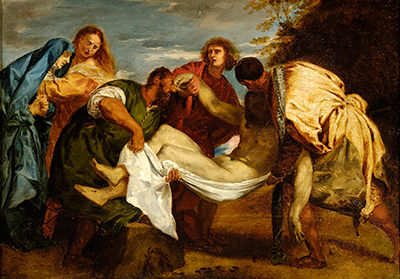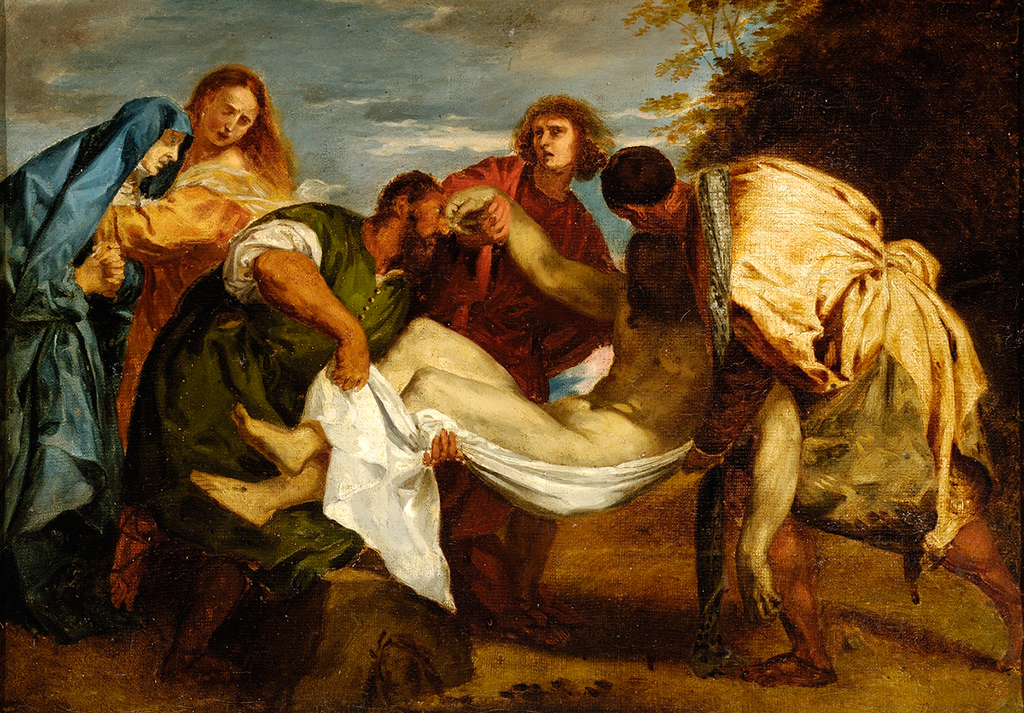Eugene Delacroix reworked a Titian artwork from centuries earlier, before later handing the painting over to one of his assistants. It may not have become one of his most famous works, but the comparison between himself and Titian is just too intriguing to ignore.
Here we find a number of figures holding up the body of Christ, with him carried in just a simple white bed cloth. They looked fraught with concern, perhaps even sadness, with Delacroix following Titian's decision to portray them outdoors, but without any great detail other than the figures themselves. This allows them to be placed boldly in the foreground, increasing the emotion of what we see here. It feels an honest and tragic portrayal, there is no heroic deed here or miraculous incidents. This significant moment in Christian scripture has also been captured by a large number of other artists as well, going back many centuries. The role of the Christian Church in European society has been dominant for many centuries and this has influenced what artists have depicted within their work, whilst many of these emotive themes are also ideally suited to inspiring artists for their next work.
Many other great artists have also taken on this powerful theme, with it being particularly well suited to the dramatic style of Caravaggio, as shown in his Entombment of Christ from 1604. One of the great influences on Delacroix, Titian, would revisit the life of Christ on many occasions, finding inspiration from different passages from within the Bible. Who can forget Christ and Mary Magdalene or Christ Carrying the Cross, for example, with both being amongst his finest work from a long and highly distinguished career. Religious themes would dominate the Renaissance and a good section of the Baroque era as well but later be replaced by other ideas, with landscape art suddenly becoming a genuine and respected genre in its own right, for the first time. Delacroix took much of his inspiration from the earlier periods, such as from Italian art, and so it was inevitable that these types of topics would also make their way into his own oeuvre from to time.
The original painting is known to have been gifted by the artist to one of his students, who then bequethed it to the Musée des Beaux-Arts de Lyon. They themselves have a fine collection of historic art today, and no doubt would have interested Delacroix, were he still alive. Whilst the 14th to 19th centuries have always been their main focus of interest, they have also added 20th century art in recent years and within that category feature the likes of Max Ernst, Amedeo Modigliani, Fernand Léger and Georges Braque making this a delightfully impressive and comprehensive collection of art, with many different movements covered.





